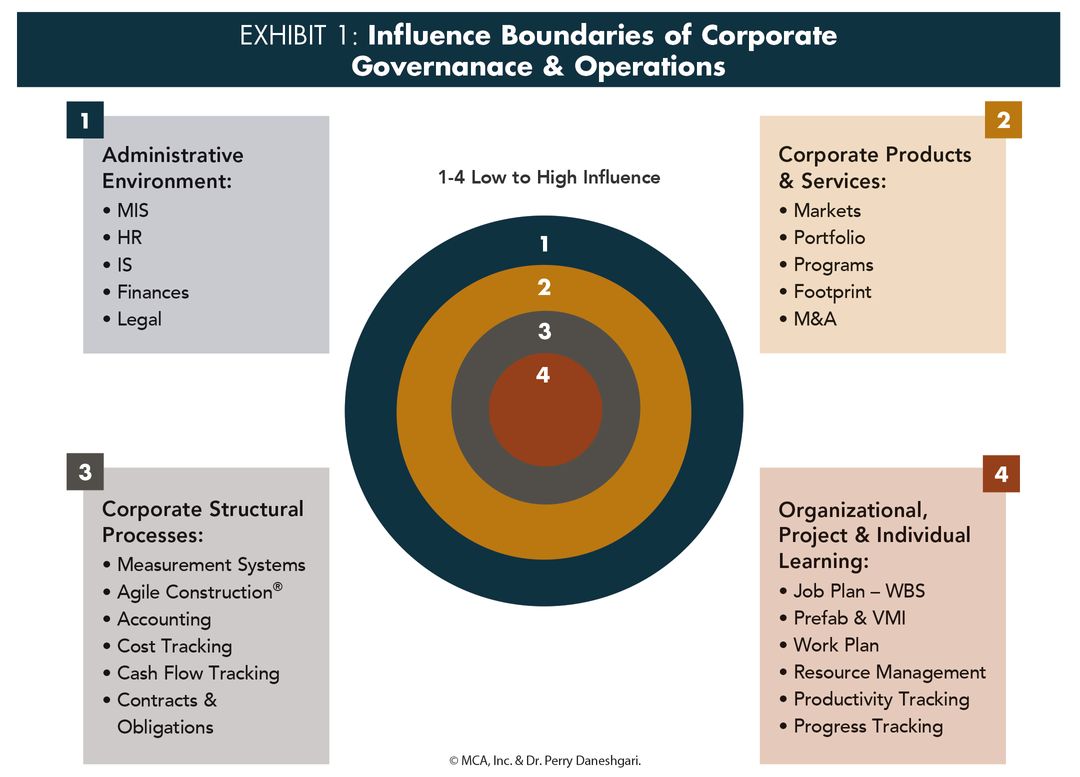In the modular and industrialized environment, the four steps of data quality management (DQM) – collecting, recording, reporting, and presenting – can help both accounting and operations more accurately predict and prevent construction risks. Tracking work, effort, time, and money as independently dependent variables is how other industries have moved to increased productivity and efficiencies.
This article will help CFMs understand and apply the skills needed to navigate the rough seas of this inflection point and get your company to a safe harbor of modular and industrialized construction. Some of the parallels to other industries are illustrative; only when these parallels are applied can they become explanatory. In other words, you cannot simply copy and paste a production system, but rather you must apply the principles and work through the process.
The Current Environment
The Industrialization of Construction® will bring an industry-wide transition from prefabrication to modular construction and, ultimately, to completely externalized work. Prefabrication will move from being an operational process used as a competitive advantage to a threshold of entry into the industry.
To lay out the operational model for modular construction, the lessons learned from industries that have previously gone through this transformation must be applied. The most important piece of this layout will be reliance on data for management and decision-making, which is, at this stage in the construction industry, a rarity except for the lagging indicators of financial reports. The factual requirements of the intent of this process will enable the passage of this transformation to be shared with the involved internal teams and external partners.
Contractors currently have two traditional, predominant operational models from which to select prefabrication:
- The Prefabrication Catalog – A contractor creates or copies a prefabrication catalog from another contractor and asks their project teams to select prefabrication assemblies from this catalog. Theprefabrication manager may also pick for the project team and build/ship the parts out to the site.
- Planning Prefabrication – Project teams plan the work prior to the project start and identify what can be prefabricated. They then coordinate with the prefabrication shop to have it built, potentially undergo quality assurance/quality control (QA/QC), and shipped to the site.
Both of these operational models are advantageous over not doing prefabrication work, but they limit application and the full benefits of prefabrication are not realized (see “Jobsite to Garage: Changing the Mindset of Prefab & Modular Construction” from the March/April 2020 issue of CFMA Building Profits1).
Spheres of Influence
The operational model for modular construction will require contractors to work in all four spheres of influence. As shown in Exhibit 1, the outermost sphere is where companies have the least influence. As the spheres progress toward the core, the influence grows, and the business and the people within each sphere can design the operational model to work within the outer layers.
While the elements in each of the four spheres apply universally, there are specific elements related to prefabrication. Key elements of the administrative environment sphere were mentioned in “Industrialization: Is Construction Next?” from the January/February 2020 issue of CFMA Building Profits.2
Revenue Recognition to Account for Prefabrication Progress
Prefabrication has significant advantages for contractor revenue recognition and cash flow but requires a stronger reliance on data and data quality. Revenue can be recognized based on fulfilling performance obligations (per the FASB’s ASC 606);3 however, the work plan and schedule of values must be structured so that off-site work is traceable and visible.
Take an HVAC contractor that fabricates a ductwork system in its shop. The percent completion of the prefabrication must be tracked and incorporated into the schedule of values to calculate the fulfillment of a performance obligation and facilitate progress billing. If this is not correctly accounted for, then the prefabrication shop activities will incur cost, and the contractor will be cash negative and potentially underbilled for most of the project.
For contractors, the advantages come when they identify the prefabrication work as part of the schedule of values and as contributions to the contract’s performance obligations. Due to being able to conduct more work in parallel for a particular jobsite, contractors are able to recognize progress associated with fulfilling obligations that are productive rather than front-loading the job based solely on cost.
